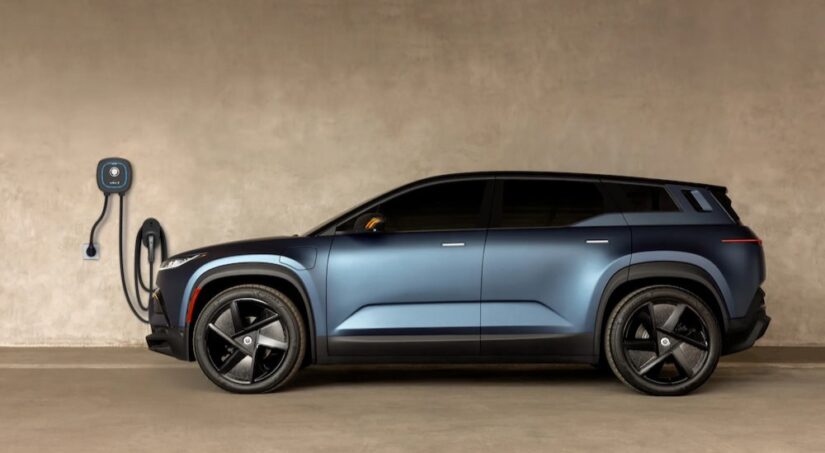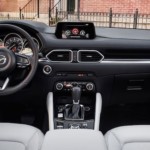When you play the game of EVs, you win, or you die. All-electric vehicles represent an exciting new era of personal transportation, inspiring auto executives and MBAs the world over to try their hand at building a better EV. Tesla represents the poster boy for startup success in the EV segment, but while plenty of brands have tried to emulate the automaker’s success, the results have been mixed at best. While automakers like Rivian and Lucid have managed to carve out a little market share in the last few years, they’re still not exactly household names. As established legacy automakers continue to invest in hybrid and electric models, these startups are quickly losing their advantage, leading to some tough decisions and even tougher headlines.
“EV Maker Fisker Pauses Production For 6 Weeks Amid Ongoing Struggles” is one good example. The California-based company brought the Fisker Ocean midsize crossover to market in 2023 but is now on the verge of bankruptcy, with net losses topping $761 million after its first year on the market. The all-electric brand is actually founder Henrik Fisker’s second bite at the EV apple. The Dane launched Fisker Automotive in 2007 but left the company and saw its assets sold off just six years later. Now, his second venture, Fisker Inc., is facing a similar crisis. While there was some talk of a partnership with Nissan that could help Fisker weather the crisis, the company’s future is uncertain at best. Fisker’s precarious financial situation begs the question: should drivers buy an Ocean EV or wait to see if the company will be relegated to the trash heap of extinct brands? We’ll answer that question as we take a closer look at Fisker’s backstory and business plan to determine if there’s any path forward for the beleaguered startup.
Call It Karma
Founded in 2007 by Henrik Fisker, Fisker Automotive had all the makings of a promising startup venture: deep-pocketed investors, including major entrepreneurs and venture capital firms, not to mention a substantial $529 million loan from the United States Department of Energy as part of a program aimed at spurring domestic EV production. Investors were won over by Henrik Fisker’s resume, which included work on such luxury models as the BMW Z8, Aston Martin DB9, and Aston Martin V8 Vantage. Fisker had even served as a design consultant in the early days of Tesla, a position that gave him a ground-level look at the early EV industry.
Fisker would showcase a production version of the Fisker Karma plug-in luxury sports sedan at the 2010 Paris Motor Show, drumming up excitement for the EV and netting the automaker 3,000 pre-orders by mid-2011. That strong response would be something of a double-edged sword for Fisker. While customer interest was certainly high, the fledgling brand was experiencing some real growing pains when it came to production. Fisker missed its goal of producing 70 to 100 test models in 2010, leading the company to suspend further pre-orders and announce that the Karma would be sold out until at least 2012.
Production issues are nothing new in the auto industry, especially when it comes to startup brands, but Fisker’s problems were further compounded by two disasters, one natural and one man-made. In the fall of 2012, Hurricane Sandy ripped through the New York metro area, resulting in historic flooding and property damage. A shipment of 338 Karmas was caught up in the storm and subjected to six feet of seawater, with the batteries in several units shorting out and starting a fire. The entire shipment was written off, strangeling output as Fisker worked to meet orders.
Reviews on the Karma itself were mixed. While the sports car earned Car of the Year honors from the automotive television series “Top Gear,” Consumer Reports was less impressed. In fact, reviewers for the nonprofit magazine didn’t even get the chance to take a lap in the Karma as it broke down during speedometer calibration. The issue was traced to a faulty battery, which was a sign of things to come. At the end of 2011, Fisker would recall 239 Karmas due to the risk of a battery-related electrical fire. The batteries were soon replaced, but Fisker found itself performing another recall in the summer of 2012 thanks to a faulty cooling fan. Later that year, the company’s battery supplier, A123 System, declared bankruptcy, forcing the automaker to halt production until a solution could be found. That solution didn’t come in time to save the company, with Henrik Fisker leaving the business in early 2013, citing disagreements with management. With no clear leader in place, Fisker would fire 75 percent of its workforce as it worked to streamline operations and court investors.
Chinese parts supplier Wanxiang Group would eventually buy Fisker’s assets, designs, and Delaware manufacturing facility for $149 million after Fisker Automotive declared bankruptcy in late 2013. In the end, Fisker Automotive produced around 2,450 Karma models between the European and American markets, including those lost in the fire. Wanxiang Group rebranded the Karma as the Karma Revero and continued selling the model until 2020, while Henrik Fisker retained the right to the Fisker logo and trademark.
Round Two
Fisker was down, but not out, mustering his forces for another crack at the burgeoning EV market and launching Fisker Inc. in 2016. Things would be different this time around, especially in the company’s C Suite. Fisker, who had clashed with his fellow executives in the Fisker Automotive days, decided to avoid such problems by making Fisker 2.0 a family affair. Henrik would serve as president, while his wife and co-founder Geeta Gupta-Fisker would act as president and CFO. Within four years, the (re)startup had landed $50 million in financing, but it was the power of Wall Street that would earn the company its biggest payday.
Fisker launched an IPO on the New York Stock Exchange in October 2020 and raised $1 billion in the process. Investors seemed buoyed by the EV brand’s resurgence, with Fisker’s stock price rising by 56 percent in a few short months. From there, the company grew at a rapid pace. Fisker opened a new headquarters and a technology center to develop vehicle software and electronics and began investing in new facilities around the world. The company was shoring up supply lines, working towards regulatory approval, and developing its debut model, the Fisker Ocean crossover SUV.
The midsize EV shared little with the Fisker Karma, especially when it came to production. Rather than manufacturing the EV on its own, Fisker teamed up with Austria-based contract manufacturing outfit Magna Steyr, which provided the Ocean with its FM29 EV platform and earned 6 percent equity as part of the deal. The arrangement simplified the manufacturing process and ensured Fisker could meet demand, but with 63,000 reservations by the end of 2022, could Fisker deliver?
The first Ocean made its way to American shores in June 2023 and earned some positive early reviews. Starting at $38,999, the Ocean is attractively priced (for the EV segment) and boasts a respectable 360-mile range. Car and Driver praised the crossover’s ample acceleration, mature exterior style, and unique features but took issue with the Ocean’s sub-par infotainment system, storage, and battery size. Road & Track was less forgiving. In a review titled “The 2024 Fisker Ocean Is Not Ready“, the auto magazine took rosier reviews to task. “Frankly, we’re more than a little surprised by the charitable response some other publications have mustered for this new model following their first exposures,” wrote Jamie Kitman. “The ride is notably choppy and harsh, road noise is excessive, and, as noted, controls have a decidedly low-grade feeling.”
Stop and Fisk
Fisker announced a new compact crossover, the Pear EV, in 2022 and has since unveiled concepts for the Alaska pickup and the Ronin, a sports car in the mold of the Karma. However, there’s a solid chance we might not see these later Fisker models come to fruition. In March of 2024, the Wall Street Journal reported that Fisker was hiring restructuring advisors for a possible bankruptcy. Fisker’s stock dropped by 47 percent following the announcement, compounding the stress on the cash-strapped company. The automaker cut its workforce by 15 percent and even entered talks with Nissan, which was said to be considering a $400 million cash investment in exchange for the rights to produce its own version of the Alaska pickup.
The rumored Nissan partnership quickly foundered, and the company now faces some long-term challenges that could see Henrik sink a second company in just over 10 years. Even the company is realistic about the future, delivering a blunt assessment in March. “Fisker’s current resources are insufficient to satisfy its requirements over the next 12 months, the company will need to seek additional equity or debt financing, and there can be no assurance that Fisker will be successful in these efforts,” reads a press release.
Where did it go wrong for Fisker, and is the Fisker Ocean a smart investment given the company’s current troubles? In many ways, the automaker is a victim of the general hype surrounding the EV segment. Every investor wants to get in on the ground floor of the next Tesla, a trend that can be seen by examining the track record of Fisker’s stock. The company’s IPO was one of 2020’s hottest launches, landing Fisker a $3 billion valuation before a single Ocean actually rolled off the assembly line. That number has now shrunk to $600 million, with Fisker shares dropping from roughly $6.00 to $0.06 in the last 12 months.
With only one model on offer, Fisker is overly dependent on Ocean sales to keep the company afloat, and the Pear, Ronin, and Alaska are all on hold for the time being. While demand was once strong, rising interest rates have dented consumer interest. Fisker still says it plans on delivering up to 22,000 Oceans in 2024, but recent cutbacks make that goal seem a little dubious.
Flying Too Close to the Sun
Fisker might have simply bitten off more than it could chew. The company sought to set itself apart from the competition with a focus on eco-friendly materials and affordability but looks to have gotten a little ahead of itself. The company’s direct-to-consumer sales approach might have also limited its reach, especially amongst the average driver. While this model has worked well for Tesla, it brings some obvious disadvantages when it comes to brand recognition and exposure.
Once upon a time, drivers would never dream of buying a vehicle from a brand that didn’t have a brick-and-mortar location. That sort of bias is less of a factor in today’s internet-saturated age, where there is increased consumer comfort around less-tangible brands, but vehicles simply represent a much larger investment than a buzzy new sandwich or niche t-shirt. Fisker has opened a small number of showrooms around the country, but unless you’re living near one of its three Fisker Centers or its handful of dealer partners, you’re still out of luck.
There’s also the matter of maintenance and aftermarket support. Generally speaking, the smaller a brand is, the more expensive repair and maintenance tasks are going to be. Finding a replacement part for your Ford F-150 or Toyota Camry is easy because these are some of the most common vehicles on the road. Sourcing a part for your Fisker Ocean, which is probably one of fewer than 15,000 examples on the road, is a different story altogether. While we generally trust the handiwork of an established manufacturer like Magna Steyr, it also makes it hard to see the Fisker as anything but a private-label product that’s produced by a third party and sold under a flashy new brand name. This approach might work for Trader Joe’s, but it’s a little less compelling when you’re talking about a $50,000 EV.
A Two-Time Loser
Designing the EV of the future is a noble goal, but until you notch a few wins and develop a following, it’s all just hot air. Henrik Fisker certainly looks to have learned a few lessons from the failed Fisker Automotive venture, especially when it comes to financing and the power of the IPO, but the new approach looks to have worked just about as well as the old one. Fisker’s decision to partner with his wife in the venture also raises a few red flags. While we’re not doubting the president and CFO’s credentials, the fact that Henrik Fisker had to look literally in-house to staff his executive team is a bit concerning. The founder is probably looking to avoid some of the management clashes that plagued Fisker 1.0, but the move doesn’t exactly smack of strong leadership.
In many ways, the Fisker story is no different than that of a number of startup auto brands. The company entered the market with the best intentions but failed to get itself up and running at capacity quickly enough to capitalize on the early interest. You can’t build a new EV in a day, but in trying to prove itself right out of the gate, Fisker ran out of runway before it could really get off the ground. Sure, we might be a little pessimistic––investment from a deep-pocketed brand could help Fisker stay afloat while it works out some of the kinks––but in today’s EV market, there are simply too many proven brands producing a lineup of increasingly efficient and reliable models to take a chance on a two-time loser like Fisker.
So, should you buy a Fisker? Our answer would have to be: not yet. If the company is able to weather its current crisis and emerge with minimal damage, models like the Ocean could provide drivers with an affordable alternative to the mainstream EV brands. That said, we’d be wary of parting with a down payment just yet. The EV market is still volatile, and high interest rates are sure to stifle demand in the short term. That said, if you’re the type of early adopter who really wants to set themself apart and isn’t worried that you might be commuting in a soon-to-be endangered species, go ahead and take a risk on Fisker.



